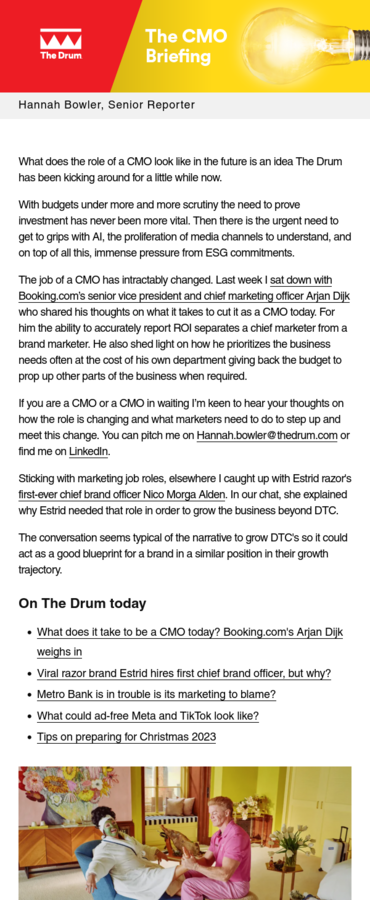Costly pitches hurt indies – but ‘land and expand’ offers better way to grow
For indies, focusing on expanding existing accounts can help keep down the cost of acquisition and increase revenues.

Expanding existing client briefs is a major source of organic growth / Unsplash
Agency growth doesn’t have to mean pitching more, and it doesn’t have to mean hunting for new clients to add to the roster. Expanding an existing relationship with a commercial partner can offer agencies a steady, sustainable route to organic growth – without the cost of pitching against rivals.
This is an essential way of securing growth for indie agencies, which are less likely to have dedicated pitching teams and less likely to have the spare resources to sell themselves than network competitors.
Advertisement
“Brand new clients consume resources to grow the business; Existing relationships pay us to grow the business. That’s a win-win,” says Micah Freedman, vice-president of growth for American agency Ruckus.
It can also cost clients less, says Yana Miladinova of comms shop Hard Numbers. “By aligning the current scope of work with the business goals and showing the results-driven impact on a regular basis, you can leverage your established rapport to propose seamless integration of additional services or ad-hoc projects,” she says.
According to Carlton Wood, executive vice-president of creative agency Lewis, this route to growth is likely to become even more important to smaller agency businesses, given the direction of key industry trends.
“In an era of clients unbundling from AOR relationships, agencies need to strategically build relationships (and trust) with existing clients project-by-project,” he says. “That requires not only nailing every opportunity you have but regularly reviewing which services in your wheelhouse you aren’t providing to your clients and making sure they know about how you could help them with future needs.”
Advertisement
Identifying new areas of growth
But nailing to meet the brief you already have while selling your agency’s future potential isn’t risk-free. You don’t want your client to feel like you’ve wasted time upselling while leaving a brief unmet. “My experience says clients don’t like to be ‘sold to’ and often want the focus to be on excelling at the current scope,” says Mark Watson, managing director of international agency services at TMS.
“You only get more work from a client if you’re already doing great work for that client,” agrees Martin Corcoran, chief exec of Yorkshire agency Summit.
For Hannah March, chief growth officer at Fold7, identifying means of adding further value is the way through that dilemma – and a way of establishing your agency as more than a supplier. “Because if you’re consistently adding value, you become a strategic partner, with a seat at the executive table that a delivery partner simply doesn’t have,” she says.
That discovery work often falls to the people tasked with sculpting and maintaining a client relationship. At Enjoy Digital, senior head of client services Jo Pope says: “We anchor account growth efforts back to value; what could we do to add more value to our partnerships?”
Cecilia de la Viesca, joint managing director, new business and marketing at UK agency Passion, says the business appoints internal “sponsors” for each client and asks account managers to also act as marketing consultants, “offering strategic guidance beyond their channel expertise.”
“We share with clients case studies, news and insights through newsletters, emails from their account leads and social media to ensure they know our capabilities and what we are doing in the market,” she adds.
Suggested newsletters for you
Corcoran says that agencies might have to offer their expertise in areas they want to grow into free of charge – at least initially. “Identifying services and channels you specialize in, yet do not work with the client on… and offering your time and opinion, free of charge [can be] a value add to further drive performance,” he says.
For Meghan Linehan, director of accounts at New York’s Something Different, the soft approach can save clients from feeling they’re being pitched. “If I have an idea that could answer a problem or grow the business, I’d have a real conversation right away. Framing it as a pitch feels too unnatural to me. It’s always having a conversation, even if the idea isn’t fully baked. You can always figure out execution later,” she advises.
Sophia Reynoso, managing partner at ScienceMagic advises scanning for further growth areas every three months. “We evaluate clients’ business needs and assess strengths, weaknesses, opportunities and threats quarterly,” she explains.
Meanwhile, Ingenuity’s Steph Bradshaw suggests that additional links to a brand’s procurement team can aid early recognition of chances for expansion. “They’re usually the gatekeepers to future reviews,” she notes. They are also likely to be cognizant of a business’ strategic but unsexy needs – the kind of briefs that can lead to a bigger account for an agency without the attendant competition.
Oli Richards, chief marketing officer of the Beyond Collective, says: “Think laterally and don’t just shoot for the shiniest brands and highest budgets. Build trust from the ground up, be open to going after the less loved parts of the client business, and establish yourself as a partner. Get that right, and you’ll never need to pitch again.”
Fundamental to the business model
None of this means that agencies must remain hostages to fortune, however. Jason Downie, US chief exec of e-commerce agency Making Science says it takes a “land and expand” approach from the beginning of a new business relationship, taking on clients it believes it can expand further down the line.
“If your company does five things really well, then customers should “land” with one or two and eventually expand to add three to five,” he explains, adding that his team plans in advance how they can bulk up an account later on. “We create a strategic, proactive roadmap to illustrate the path from closing to expansion, which guides our client-facing professionals and identifies the opportunities where it makes sense to offer additional services.”
Similarly, Richard Pinder, chief executive of Rankin Creative, says that most of that agency’s business growth comes from retained and expanded accounts.
Pinder tells The Drum: “The famed Shelly Lazarus of Ogilvy used to say that new business should be farmed, not hunted. The best agency relationships, she argued, evolve and are not the result of a blind date pitch process. The vast majority of our retained relationships are the result of a ‘crawl, walk, run’ approach to getting to know each other and not the ‘financially driven, impartially cold, purchasing’ approach. As a result, we have clients who ask for more from us, not wish they’d given us less, which means more of our effort can go into the work rather than pursuits.”


